
На сайте используются cookie файлы
The site uses cookie files
Данный сайт имеет возрастное ограничение!
This site has age restrictions!
Я подтверждаю, что мне, увы, уже давно исполнилось 18 лет
I think for any winemaker in the world it would be an honor to work at Château d’Yquem. But of all the applicants, she was chosen – Sandrine Garbay, who was only 27 years old at the time! One of the youngest and most respected professionals on the planet answered D+ questions. Including this story, that looks like a fairy tale.
D+: Madam Garbay, Château d’Yquem is classified as Premier Cru Supérieur, the highest category in the classification of Bordeaux wines. To drink such a wine is, perhaps, like having a picture of Edgar Degas in your own living room… You can hardly meet them on the shelves of a supermarket (Château d’Yquem as well as Degas) J. How does it feel to work with wine of such a high level, in the interiors with such a design, in the Château with such a history?
Sandrine Garbay: It is funny you should compare the experience at d’Yquem to a painting by Degas, since I grew up with a copy of The Star hanging above my bed as a child and teenager. It is a great parallel. And in the same way that you never get tired of looking at a piece of art that moves you, I never get tired of coming to work in the enchanting setting of d’Yquem, nor tasting its precious elixir! Even after 25 years in the business! I am proud and, above all, honoured to work at d’Yquem.

D+: How did it happen that you ascended this pedestal in a very young – as for a winemaker – age? How old were you? Why was it you exactly who was chosen and how did your professional path begin at this, without exaggeration, amazing place, which personifies all the best that there is in the Sauternes region? It looks like a fairy tale.
S.G.: Not long after graduating in Oenology in 1989, aged 22, I was recruited by one of my professors specialising in MLF, Ms Aline Lonvaud, to undertake research in bacteriology. Thus, after spending five years working in a laboratory, I obtained a PhD in oenology in 1994. But eventually, as much as I enjoyed my job, I dreamt of returning to production and fulfilling my true vocation as an oenologist. That is why, not long after, I started looking for work in the southern Gironde, since my husband had just set up his own business not far from Sauternes. It was at this moment, when Alexandre de Lur Saluces offered me the opportunity to join his team at d’Yquem, that my life really turned into a fairy tale. When I heard the news, I was overwhelmed with joy, not to mention anxiety! I began working at d’Yquem on the 1st of September 1994.
My role consists in fermenting and ageing the wines at the estate, from the moment they arrive at the cellar to bottling. I also supervise packaging and shipping departments, and I am in charge of a team of ten people.

D+: Could you please tell us about your education – how much does the theory of winemaking help you in practice, as Sauternes is a very special, complex wine? Which of the winemaking masters became a teacher for you?
S.G.: I am continuously drawing on my initial training, my experience at Yquem, as well as technical and scientific advancements led by researchers at the ISVV, who I have a lot of faith in!
I learnt the specific characteristics of Sauternes, and particularly d’Yquem wines, thanks to my predecessor Guy Latrille, who I collaborated with for three years, as well as Francis Mayeur, the estate’s current technical director (who has been working at d’Yquem for 37 years!) and the now-retired consulting oenologist, Serge Chauvet, who first introduced me to Alexandre de Lur Saluces and to whom I owe a great deal (he was my «fairy godfather», so to speak). It is clear the incredible phenomenon that is noble rot requires special attention that cannot be learnt out of a textbook. The reaction that takes place between the grape (the host) and the fungus Botrytis cinerea (the guest) under the watchful eye of the Sauternes microclimate could almost be described as magic. This extraordinary process climaxes in the creation of d’Yquem, a treasure trove of voluptuousness and refinement.

D+: How does Sandrine Garbay’s regular work day go? Which is the most stressful period/season for you, why and how does this stress manifest itself?
S.G.:: My role consists in fermenting and ageing the wines at the estate, from the moment they arrive at the cellar to bottling. I also supervise packaging and shipping departments, and I am in charge of a team of ten people.

A typical day begins by allocating tasks to each of my colleagues. I then get down to tasting the wines on which we will work. This may involve tasting the wines in each barrel before they are racked and blended, or taking part in group tastings led by a committee of six to seven people to determine the final blend, or regularly tasting the wine throughout ageing. I then carry on completing administrative tasks (relating to wine, traceability, record- keeping, customs formalities, etc.). I generally devote some time each day to promoting the d’Yquem experience and sharing our dedication, either with the estate’s visitors, or with journalists, sommeliers or students from all over the world. The harvest is the most intense and stressful time of year, but it is also the most thrilling! It is my favourite season, since it reveals the intrinsic nature of my job. A new vintage is taking shape – this is an incredibly exciting time for us!
D+: Château d’Yquem has a very long history. What has been fundamentally changing in the process of winemaking during all these long years, and what has remained unchanged? For example, we know that in 2011 the estate changed the process of vinification – was this your idea? Do you have, in spite of the legislative regulations and the traditions of the Château, a carte blanche to apply your own techniques, to experiment – if so, what other know-how have you applied?
S.G.: When considering altering the very essence of a wine like d’Yquem, it is important to do so with caution. Any change or development in the winemaking process must be carefully thought-through, evaluated and adapted to the identity of the end product. What has not changed throughout the history of d’Yquem, is the emphasis we place on producing and selecting high-quality grapes. Can you imagine just how complex and specific harvesting the botrytised grapes in passes is? We have a wealth of expertise at the estate, enriched with several centuries of experience.
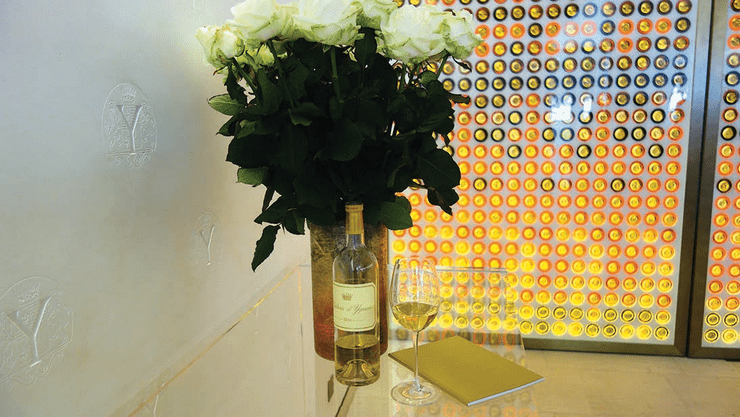
In recent years, we have improved alcoholic fermentation thanks to advances in research, whilst remaining true to our roots by using the grapes’ indigenous yeast. We also fine-tuned ageing to help preserve the floral and fruity aromas of the wine, which resulted in the very gradual shortening of the barrel ageing period, from 40 to 20 months between 2000 and 2011, as well as reduced oxygenation in the wine thanks to racking without air contact and bottling in an inert gas environment. We are constantly monitoring the latest technologies. If we come across something that could be of interest to d’Yquem without compromising our unyielding respect for the terroir and the product, we will consider conducting a trial, possibly full-scale, and evaluating the results.
We also fine-tuned ageing to help preserve the floral and fruity aromas of the wine, which resulted in the very gradual shortening of the barrel ageing period, from 40 to 20 months between 2000 and 2011, as well as reduced oxygenation in the wine thanks to racking without air contact and bottling in an inert gas environment.
D+: Sugar level is much higher in Château d’Yquem today than it was before. Why did you come to such a decision and what are its advantages?
S.G.: It is not a choice on our behalf – it is in fact the result, albeit a positive one, of climate change. Throughout the history of Yquem, the sugar levels in the greatest vintages were very similar to those produced since the 2000s. D’Yquem 1929, d’Yquem 1937, d’Yquem 1945 and 1949, and even d’Yquem 1959, which were grown under similar weather conditions to today, all had over 130 g/L of residual sugar. The intermediate vintages of those decades were clearly less concentrated: between 80 and 110 g/L.
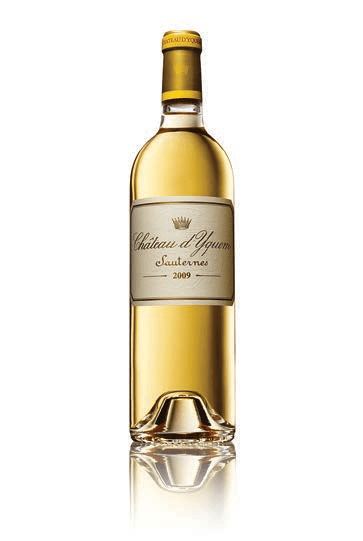
But since the mid 1990s, the climate has been much more conducive to the spread of noble rot and, in particular, the evaporation of water to concentrate sugar levels afterwards. This resulted in the sugar levels in the wines exceeding 130 g/L, contributing greater power, aromatic complexity, and an impressively long aftertaste. The clear advantage of this is that, since 2001, we have managed to produce a «1937» every year! I am exaggerating a little, but there is a grain of truth in this…
D+: Could you tell us please about the features of working in the Château d’Yquem with a barrel – during the processes of vinification and aging. When we were on a tour in your Château last year – by the way, we saw you from afar, but you were busy and we didn`t dare to come and make an acquaintance J – they told us that about 400 barrels are used per year.
S.G.: Barrels play an integral role in the winemaking process. From the very beginning, the juice from the grapes is fermented in new barrels (100%), which will accompany the wine throughout the ageing process. An aromatic reaction occurs between the lactones from the oak and those produced by Botrytis cinerea, which is responsible for the marmalade and candied orange notes typical of Sauternes wines. We are thus very fond of barrel ageing, but this does not prevent us from trialling other types of container. Come and ask us again in 10 years time!
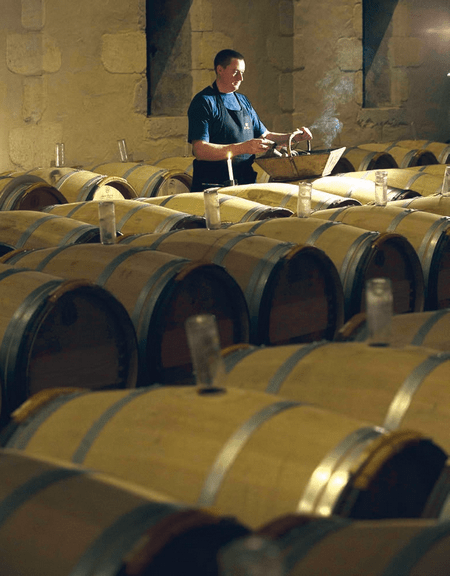
D+: Which Château d’Yquem vintage would you call the top? Have you ever had bad vintages in your memory? What do you do in such cases? What is the main difficulty in the work of the head winemaker of Château d’Yquem?
S.G.: Many d’Yquem vintages are top-level wines: 21-29-37-45-49-67-75-83-88-97 and the legendary 2001. But in recent years, I would like to highlight the 2009-2015 and the 2017, which are, quite simply, fabulous! Of course, we should not forget that Mother Nature can spoil everything, as was the case in 2012. During this extraordinary year, I discovered how the rain, which fell almost incessantly in October, could lead to the development of grey rot and destroy the entire crop in just two weeks. We could not do anything to stop it… The one hundred barrels or so of wine produced (versus 400 for a typical vintage) turned out very bland and lacking body on the palate. The wines were not bad in themselves, but they were far from meeting the high standards demanded by d’Yquem. Pierre Lurton, with the full support of Bernard Arnault, chose not to produce d’Yquem that year.
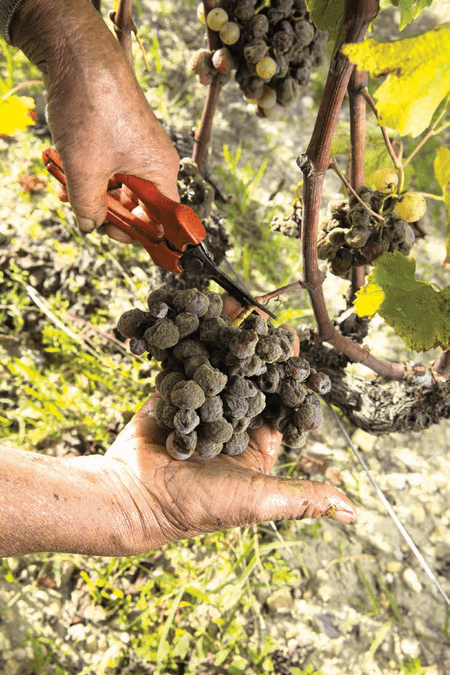
For my part, this brought bad memories. The feeling of powerlessness was difficult to overcome, as always, but resilience and hope came with the following vintages. We are lucky in that respect!
D+: Last year Drinks+ visited Château d’Yquem. Welcoming his guests Bernard Arnault, General Manager of the LVMH, said that Château d’Yquem is following the path of organic winemaking and is going to move to biodynamics after completing a series of certification procedures in this status. What additional steps should Château d’Yquem make for this?
S.G.: We started our transition to organic viticulture two years ago. All in all, there were not many major changes to undertake. We have never used chemical weedkillers, practising traditional ploughing instead. We do not use chemical fertilizers either, we have always enriched our soils with local farm manure only. We adopted organic methods to fend off powdery mildew and mating disruption against grape worms.
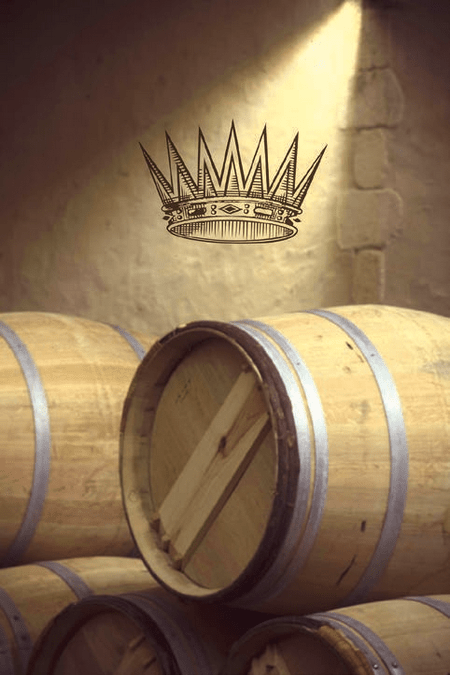
However, we were still using chemical biocontrol molecules to fight against mildew and black rot, which are not permitted in organic viticulture. We therefore decided to completely abandon these molecules and the estate has been officially undergoing a conversion to organic viticulture since August 2019. It will take us three years to obtain organic certification. This will have no impact on our cellar activities, since we already respect organic specifications.
When Alexandre de Lur Saluces offered me the opportunity to join his team at d’Yquem, that my life really turned into a fairy tale.
D+: They say wine starts in the vineyard. How much of this is fair for Sauternes?
S.G.: All wines start their journey in the vineyards, and in Sauternes we encounter the same challenges faced by dry red wine estates. We communicate with our colleagues from other estates, particularly regarding new technologies and developments that will help reduce the use of copper and sulphur to protect our vines. This is the major challenge of the Bordeaux wine region, and it should be remembered that our climate is not the same as that in the Languedoc or Burgundy. We tend to have a significant amount of rainfall during the growth cycle, which is already imposing the threat of vine diseases this year. When the Bordeaux region says that converting to organic viticulture is not easy, it is not for complacency or a lack of conviction on the part of winegrowers, it is because fighting against mildew and black rot using only copper is incredibly difficult.
D+: One of the features of Château d’Yquem is that grapes are harvested in 13 stages, with different Botrytis levels, which adds complexity and ideal acidity balance to the wine – what is your role and actions during this period?
S.G.: In fact, the harvest at d’Yquem takes place, on average, in five successive passes. That is already a lot! The organisation of these passes and the harvesting strategy is decided by the estate’s technical director, Francis Mayeur. He and I, alongside the vineyard manager, of course, communicate on a continuous basis. This stage is crucial in determining the quality of the wine. Nothing should be left to chance, and even with the three of us supervising this task, it is quite a challenge.

D+: Do you have assistants? Could you tell us about your team – who these people are, their education, age, work experience, interests etc. In general, what is your team like that are creating a legendary wine – the Sauternes of Château d’Yquem?
S.G.: I work with ten people all year round. I have a quality control assistant, whom I have been working with for the past 21 years, as well as a packaging assistant who has been at d’Yquem since 1993, and an assistant in charge of shipments since 2012. Only the latter was trained in winemaking – the other two come from very different backgrounds, more suited to their roles. They all completed their training at d’Yquem.

D+: Perhaps this might look like a provocation to violate corporate ethics, and yet, let me ask you: if not Château d’Yquem, then which of the famous wines would you single out for its impeccable quality?
S.G.: There are many great wines are remarkable! In this respect, I truly admire the work of Bordeaux-based consultant oenologist, Eric Boissenot, on behalf of all his clients, whatever their status. He is an incredibly talented man who maintains absolute discretion at all times. Similarly, Vincent Millet’s work at Calon Ségur is the perfect example of rigour and precision. The wines have gained considerable elegance and intensity, I am a big fan!
D+: Which of the Château d’Yquem vintages was the oldest that you have personally tried? Can the oldest Sauternes be called the best?
S.G.: The oldest d’Yquem that I have tasted was a d’Yquem 1801. While my emotions were running high, it was not the best wine I have ever tasted. I have fonder memories of d’Yquem 1811, which featured aromas of cooked fruit, mingled with roasted nuances and notes of liquorice and spices. Generally speaking, d’Yquem wines require twenty years of ageing to fully express their rich range of aromas. However, younger wines can also be immensely enjoyable, while some very old ones remain delicious for an incredibly long time (over 100 years!). There is no hard and fast rule and each vintage may present its very own tasting curve. That is why it is a good idea to buy several bottles from the same vintage to taste it at every stage of its development – that way you will never end up disappointed!

D+: The problem of climate change leads to the fact that winemakers start experimenting with varieties which are not familiar to a particular region, crossing certain vines in the hope that they can develop something resistant to one of the main modern challenges of nature. Is Château d’Yquem thinking about climate change?
S.G.: Climate change presents a real challenge for the future of our vineyards. Testing new grape varieties is an avenue that we are exploring on a few rows, in order to plan the future while remaining as faithful as possible to the identity of d’Yquem. But it is not the only one. Between the 1960s and the 1980s, a cool climatic phase in Bordeaux led us to favour early-ripening rootstocks and clones, alongside vineyard management and practices designed to compensate for lower temperatures. In recent years, this trend has completely reversed, so that we opted for easy- to-implement tools to delay ripening (shifting towards late- ripening rootstocks and clones, modifying vine training and the height of the leaf canopy, studying shading, as well as controlled irrigation in very early-ripening plots). These are just a few of the many avenues to explore and implement at the regional level. The Nouvelle Aquitaine region has invested significantly into achieving this objective.
D+: What does the chief winemaker of Château d’Yquem dream about?
S.G.: My dreams remain humble: to continue to fully participate in the epic saga that is d’Yquem, to watch it adapt to the passing of time, to see the next generation take over this magnificent estate and to see it shine around the world, as it rightly deserves!
Photos by Château d’Yquem